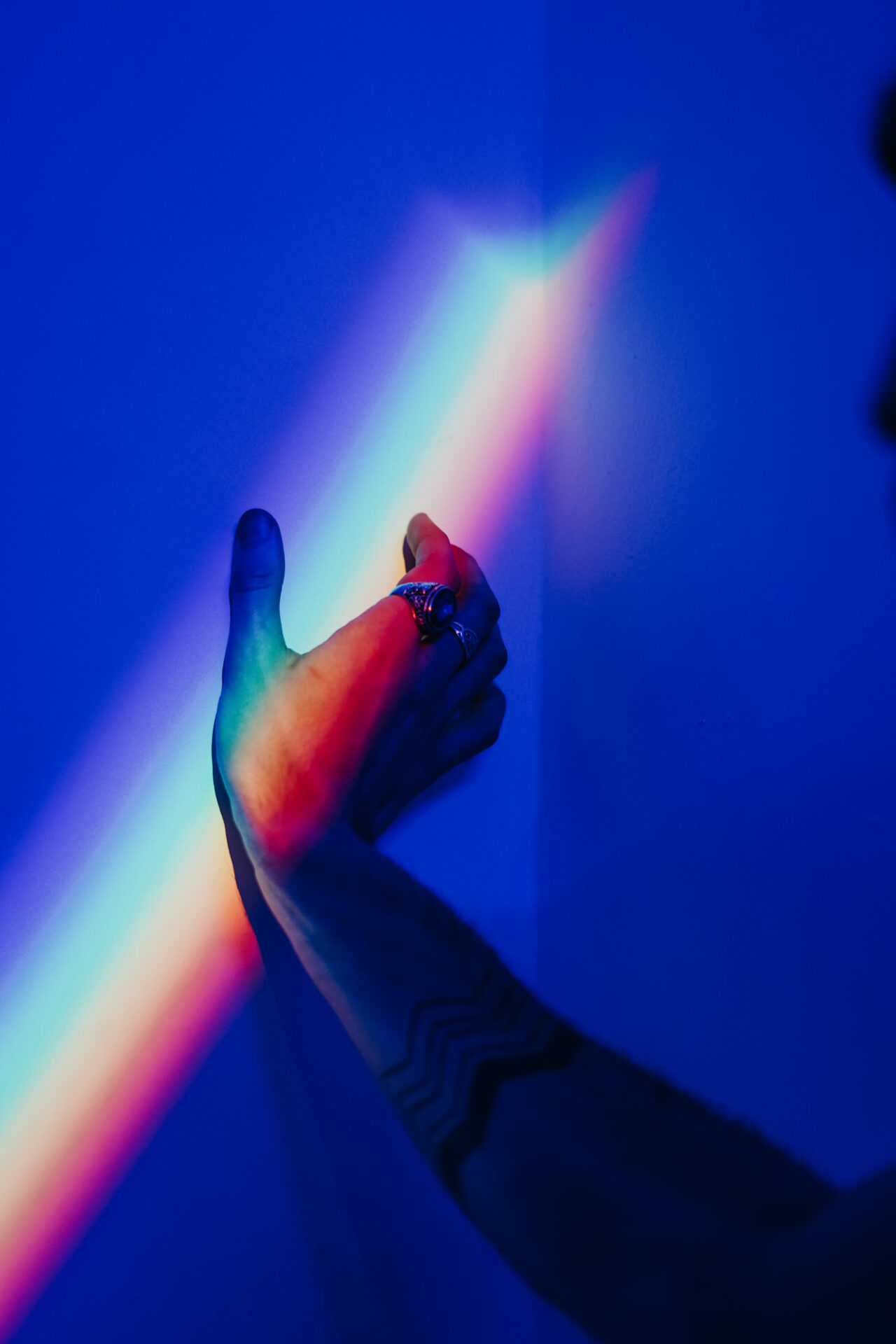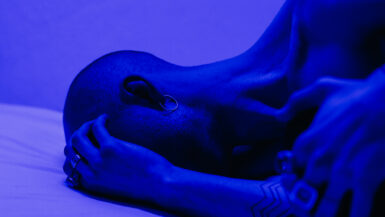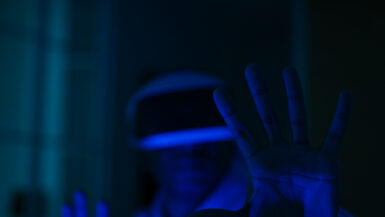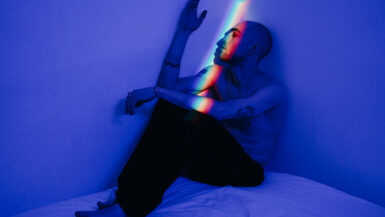In today’s fast-paced, technology-driven world, we are constantly exposed to various sources of artificial light. One such type of light, known as blue light, has been a subject of increasing interest among researchers and health professionals. In this article, we delve into the fascinating world of blue light and explore its impact on our body clock, sleep patterns, and overall productivity. With a thorough understanding of the underlying science and recent research findings, we aim to provide you with valuable insights that could help you optimize your exposure to blue light and harness its potential benefits, while mitigating any associated risks. So, let us embark on this illuminating journey and discover the crucial link between blue light, sleep, and productivity.
Blue Light’s Impact on Sleep Quality and Duration
As we delve deeper into the world of blue light and its effects on our body clock and sleep patterns, it is essential to understand how this type of light influences the quality and duration of our sleep. In this section, we will explore the mechanisms through which blue light interacts with our brain and internal clock, and discuss some practical strategies to manage its impact on our sleep cycle.
The Science Behind Blue Light and Sleep
Blue light, which is emitted by the sun, electronic devices, and artificial lighting, has a significant impact on our circadian rhythm – the natural 24-hour cycle that governs various physiological processes, including sleep. Exposure to blue light in the evening, particularly from screens and devices, can disrupt this rhythm by suppressing the production of melatonin, a hormone that plays a crucial role in promoting sleep.
Studies have shown that exposure to blue light before bedtime can delay the onset of sleep, reduce sleep quality, and lead to shorter sleep duration. Moreover, prolonged exposure to blue light during the night can further exacerbate these effects, potentially contributing to sleep disorders, such as insomnia. To learn more about the intricate relationship between blue light and sleep, refer to our article on How Blue Light Affects Sleep and Immune Function.
The Consequences of Poor Sleep on Health and Productivity
The impact of blue light on sleep quality and duration has far-reaching consequences for our overall health and productivity. Chronic sleep deprivation has been linked to a wide range of health issues, such as obesity, cardiovascular disease, and impaired cognitive function. Moreover, poor sleep can negatively affect our mood, memory, and decision-making abilities, ultimately undermining our ability to perform tasks efficiently and effectively.
Strategies for Minimizing Blue Light’s Impact on Sleep
Fortunately, there are several practical strategies to minimize the impact of blue light on our sleep patterns, ensuring a restful and rejuvenating night’s sleep. Some of these strategies include:
1. Limiting screen time in the evening, particularly during the hour or two before bedtime.
2. Using blue light filtering apps and settings on electronic devices.
3. Opting for dim, warm lighting in the bedroom and surrounding areas.
4. Establishing a consistent sleep schedule and bedtime routine.
By implementing these measures, we can effectively manage our exposure to blue light and protect our sleep quality and duration. This, in turn, will enable us to maintain optimal health and productivity throughout our waking hours.
Understanding Blue Light and Its Sources
As we explore the fascinating world of blue light and its effects on our internal clock and sleep patterns, it is essential to understand the nature of this type of light and where it comes from. In this section, we will delve into the science behind blue light and identify the various sources that contribute to our daily exposure. By gaining a deeper understanding of blue light and its sources, we can better manage our exposure and mitigate any potential adverse effects on our sleep and overall well-being.
The Science of Blue Light
Blue light is a part of the visible light spectrum, with wavelengths ranging from approximately 380 to 500 nanometers. It is characterized by its unique properties, which include higher energy levels and a shorter wavelength compared to other colors in the spectrum. These properties enable blue light to penetrate deep into the eye, reaching the retina and influencing various biological processes.
One such process is the regulation of our circadian rhythm, which is the 24-hour cycle that governs our sleep-wake patterns and various other physiological functions. Blue light exposure during the day can be beneficial, as it promotes alertness, enhances mood, and supports cognitive function. However, exposure to blue light in the evening can interfere with our body’s natural sleep-wake cycle, suppressing the release of melatonin and making it more difficult for us to fall asleep.
Natural and Artificial Sources of Blue Light
Blue light is emitted by a variety of natural and artificial sources, which we are exposed to throughout the day. Some of the most common sources of blue light include:
1. Sunlight: The sun is the primary source of blue light, with its rays containing a wide range of wavelengths, including blue light. Exposure to natural sunlight during daytime hours can be beneficial, as it helps regulate our circadian rhythm and promotes a healthy sleep-wake cycle.
2. Electronic Devices: Many electronic devices, such as smartphones, tablets, and computers, emit blue light from their screens. Prolonged exposure to screens, particularly in the evening, can disrupt our sleep patterns and negatively impact sleep quality.
3. LED and Fluorescent Lighting: Energy-efficient lighting options, such as LED and fluorescent bulbs, also emit blue light. These sources of artificial light can contribute to our overall daily exposure, particularly when used in the evening or at night.
Managing Our Exposure to Blue Light
To optimize our sleep patterns and maintain a healthy circadian rhythm, it is crucial to strike a balance between the beneficial daytime exposure to blue light and minimizing its potentially disruptive effects in the evening. Some practical steps to manage our exposure to blue light include:
1. Ensuring adequate exposure to natural sunlight during the day.
2. Reducing screen time during the evening, particularly in the hour or two before bedtime.
3. Using blue light filtering apps or screen protectors on electronic devices.
4. Switching to warmer, dimmer lighting options in the evening, such as incandescent bulbs or amber-colored LED lights.
By taking these measures to regulate our exposure to blue light, we can support our body’s natural sleep-wake cycle and promote restful, rejuvenating sleep. This, in turn, will contribute to improved overall health, well-being, and productivity.
How Blue Light Affects Work Productivity
The impact of blue light on our body clock and sleep patterns extends beyond our personal lives and into the realm of our professional lives, particularly concerning work productivity. In this section, we will explore the various ways in which blue light exposure can either positively or negatively affect our performance and efficiency at work. By understanding these effects and implementing appropriate strategies, we can harness the potential benefits of blue light, while mitigating its potential drawbacks, to maximize our productivity during working hours.
The Dual Nature of Blue Light on Productivity
Blue light exposure can have both positive and negative effects on work productivity, depending on the timing and duration of exposure. During daytime hours, blue light can be beneficial by promoting alertness, enhancing mood, and supporting cognitive function. This can lead to increased focus, better decision-making, and improved overall work performance.
On the other hand, exposure to blue light in the evening and at night can disrupt our sleep patterns, leading to sleep deprivation and its associated consequences. These include reduced cognitive function, impaired memory, and diminished decision-making abilities, all of which can significantly undermine our productivity at work.
Optimizing Daytime Blue Light Exposure for Enhanced Work Performance
To reap the benefits of blue light exposure during daytime hours, consider the following strategies:
1. Ensure exposure to natural sunlight by taking breaks outside or working near a window.
2. Utilize blue light-enhancing devices, such as lightboxes or blue light-emitting lamps, particularly during the morning hours or on overcast days.
3. Opt for cooler, brighter lighting in workspaces to promote alertness and focus.
By implementing these measures, you can effectively harness the positive effects of blue light exposure during the day, leading to enhanced work performance and productivity.
Minimizing Evening Blue Light Exposure for Better Sleep and Work Productivity
To counter the potential negative effects of evening blue light exposure on sleep and productivity, consider the following strategies:
1. Limit screen time during the evening, particularly in the hour or two before bedtime.
2. Use blue light filtering apps and settings on electronic devices.
3. Opt for warm, dim lighting in the evening to promote relaxation and prepare the body for sleep.
By adopting these practices, you can effectively minimize the impact of blue light on your sleep patterns and ensure that you are well-rested and prepared for a productive day at work.
Striking a Balance for Optimal Work Productivity
Ultimately, the key to maximizing work productivity in the context of blue light exposure lies in finding the right balance between daytime and evening exposure. By optimizing daytime exposure to blue light to promote alertness and cognitive function, while minimizing evening exposure to support healthy sleep patterns, you can effectively enhance your overall work performance and productivity.
Incorporating these strategies into your daily routine will not only help you maintain a healthy circadian rhythm but also empower you to perform at your best in your professional life.
The Role of Melatonin in Sleep Regulation
As we continue to explore the fascinating relationship between blue light and sleep patterns, it is crucial to understand the role of melatonin, a hormone that plays a significant part in regulating our sleep. In this section, we will delve into the biology of melatonin and how blue light exposure can influence its production, ultimately affecting our sleep quality and duration.
Understanding the Biology of Melatonin
Melatonin, often referred to as the “sleep hormone,” is a naturally occurring hormone produced by the pineal gland in the brain. Its primary function is to regulate our sleep-wake cycle, also known as the circadian rhythm. Melatonin levels typically begin to rise in the evening as the sun sets, reaching their peak during the night, and gradually decrease as morning approaches.
By inducing feelings of drowsiness and promoting sleep, melatonin helps to maintain a healthy sleep pattern, ensuring that we get the rest we need to function optimally during our waking hours. The release of melatonin is primarily influenced by light exposure, with darkness stimulating production and light suppressing it.
How Blue Light Affects Melatonin Production
Blue light, with its unique properties and high energy levels, has a particularly significant impact on melatonin production. Exposure to blue light, especially in the evening or at night, can suppress the production of melatonin, making it more difficult to fall asleep and maintain a healthy sleep pattern.
This interference with melatonin production can lead to an array of sleep-related issues, such as difficulty falling asleep, reduced sleep quality, and shorter sleep duration. Prolonged exposure to blue light during the night can further exacerbate these effects, potentially contributing to sleep disorders and negatively impacting our overall health and well-being.
Practical Steps to Protect Melatonin Production and Promote Healthy Sleep
To safeguard melatonin production and support healthy sleep patterns, consider implementing the following practical steps:
1. Establish a consistent sleep schedule, aiming for 7-9 hours of sleep per night.
2. Create a sleep-conducive environment by maintaining a dark, cool, and quiet bedroom.
3. Limit exposure to blue light in the evening, particularly during the hour or two before bedtime.
4. Consider using blue light filtering apps or screen protectors on electronic devices when using them in the evening.
5. Opt for warm, dim lighting options in the evening to facilitate relaxation and prepare the body for sleep.
By adopting these measures, you can effectively safeguard your melatonin production and promote healthy sleep patterns. This, in turn, will contribute to improved overall health, well-being, and productivity during your waking hours.
Strategies for Minimizing Blue Light Exposure
As we continue our exploration of blue light and its effects on our body clock and sleep patterns, it is essential to identify practical strategies to minimize exposure to this high-energy light. By adopting these measures, we can effectively manage our daily exposure to blue light and protect our sleep quality, ultimately promoting overall health and well-being. In this section, we will discuss several effective strategies to reduce blue light exposure and maintain a healthy circadian rhythm.
Establish a Consistent Sleep Schedule
One of the most effective ways to minimize the impact of blue light exposure on our sleep patterns is by establishing a consistent sleep schedule. Going to bed and waking up at the same time each day helps regulate our body’s internal clock, making it less susceptible to disruptions caused by blue light exposure. Aim for 7-9 hours of sleep per night, ensuring that your body receives the rest it needs to function optimally.
Limit Evening Screen Time
Electronic devices, such as smartphones, tablets, and computers, are major sources of blue light. To protect your sleep, try to limit screen time during the evening, particularly in the hour or two before bedtime. Implementing a digital curfew can help train your body to wind down and prepare for sleep, reducing the likelihood of blue light-induced sleep disruptions.
Utilize Blue Light Filtering Technology
Many electronic devices now offer built-in blue light filtering settings or apps, which can help mitigate the impact of blue light exposure on your sleep. These filters reduce the amount of blue light emitted by screens, making them less disruptive to your sleep-wake cycle. Consider activating these settings in the evening to minimize the potential negative effects of blue light on your sleep.
Opt for Warm, Dim Lighting in the Evening
The type of lighting used in your home can significantly impact your exposure to blue light. In the evening, switch to warm, dim lighting options, such as incandescent bulbs or amber-colored LED lights, which emit less blue light than cooler, brighter lighting options. This will help create a relaxing atmosphere and signal to your body that it’s time to wind down and prepare for sleep.
Expose Yourself to Natural Sunlight During the Day
Exposure to natural sunlight during daytime hours can actually help regulate your body’s internal clock and counteract the negative effects of evening blue light exposure. By spending time outdoors or near a window during the day, you can ensure that your body receives the necessary signals to maintain a healthy sleep-wake cycle.
Consider Wearing Blue Light Blocking Glasses
If you find it challenging to reduce your exposure to blue light during the evening, consider investing in a pair of blue light blocking glasses. These glasses are designed to filter out blue light, reducing its impact on your sleep-wake cycle. Wearing blue light blocking glasses in the evening can help protect your circadian rhythm and promote restful sleep.
By adopting these practical strategies, you can effectively minimize your exposure to blue light and safeguard your body’s internal clock. This will ensure that you maintain healthy sleep patterns and enjoy the numerous benefits of restful, rejuvenating sleep.





Leave a reply